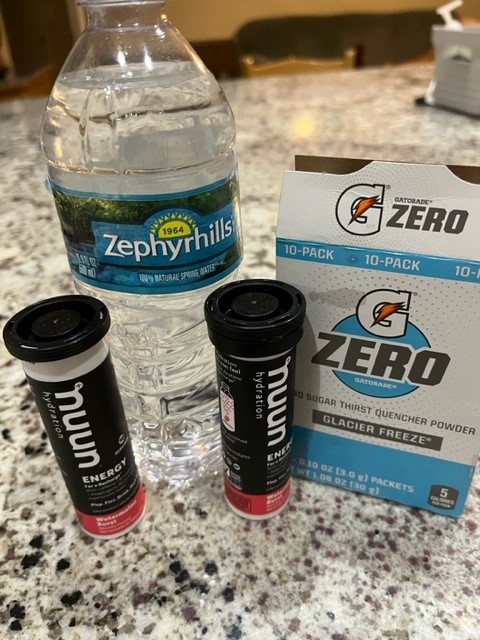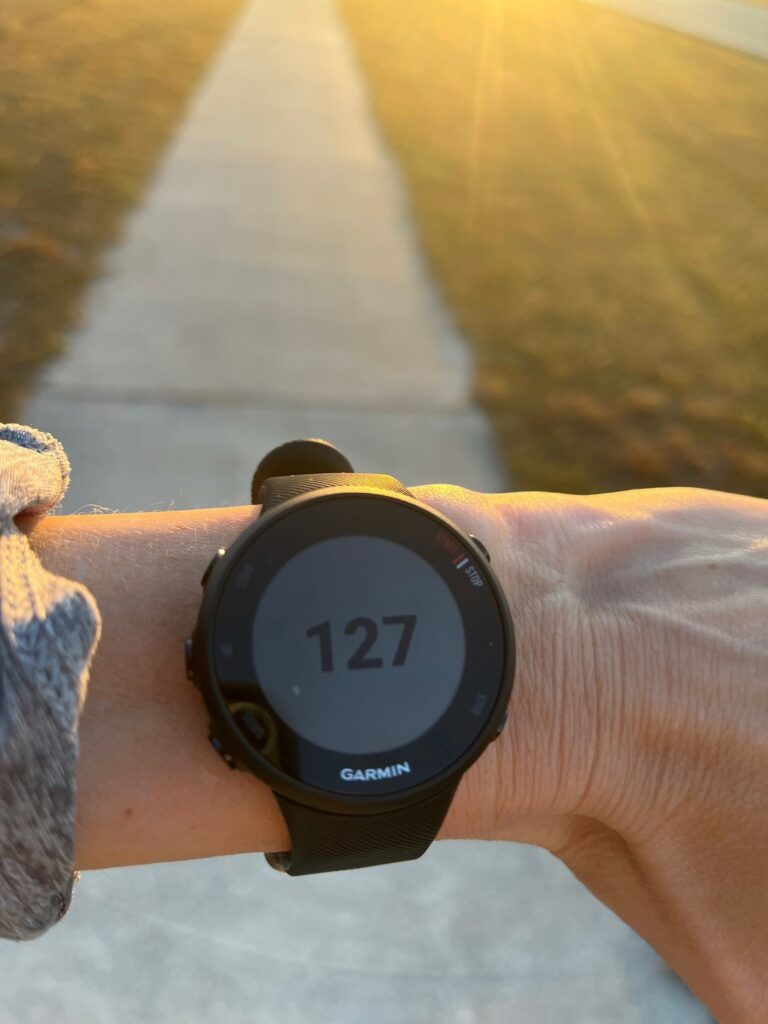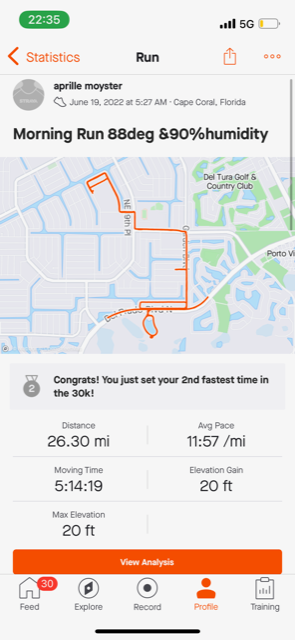
Are you looking for practical ways to run in the heat safely and comfortably? As summer heats up and hotter weather is lasting longer, more and more of us will be faced with this situation. There are some strategies that can help you safely run and enjoy it which I’ve been using for years.
In general, running in the heat is possible when done sensibly by adopting various strategies. Heat related risks can be minimized as many are able to successfully run in excessive heat with training. In addition, running can be more enjoyable and effective by making some adjustments to your schedule or routine.
I’ve been running in subtropical heat for many years now. As I enter my late 40’s I am finding it more challenging, but the below tips continue to help me. Read on for some of the top tips I’ve found that may help you as well.
Run When It’s Cooler

Running when it’s cooler is obvious, but it’s not always the most convenient. This may involve adjusting the time you normally run and or the gear you need.
It’s best to run early or late in the day as the temperatures are usually lower. In the summer months, the evening temperatures can still be quite warm, but humidity levels may be lower.
I usually run first thing in the morning when the temperature is coolest. Although the humidity levels are the highest, the sun is not as strong which makes it feel cooler too.
When running before the sun comes up, you should take a light, mace, and be more vigilant of your surroundings. Taking mace with me puts my mind at ease, but both are good safety precautions.
Hydrate and Include Electrolytes

Make sure you hydrate before and during your run. You don’t want to start off your run being slightly dehydrated as the heat and humidity will affect you that much faster.
In the heat, you will lose more than fluids by sweating. It is easy to experience an electrolyte imbalance if you are only hydrating with water, especially on longer runs.
Be conscious to rehydrate with a sports drink or make your own. While water is most important, adding some electrolytes becomes more important the longer you run and the hotter it is.
I usually plan my running route around a local park that has a water fountain. For my longer runs, I take an electrolyte powder or drink like Gatorade, Nunn, or Propel.
Use A Heart Rate Monitor

You will likely need to slow down, but you may not realize the effect of the heat until it’s too late. Monitoring your heat rate is an excellent way to keep tabs on your body.
Your heart rate naturally increases in the heat as your body works harder to keep you cooler. Compared to cooler temperatures the same pace will feel harder and you will have a higher heart rate.
Running by heart rate is a good strategy to keep you from overheating or from experiencing heat related illnesses. Most heart rate training plans recommend doing the majority of your runs in a Zone 2 range.
See my article here for the best heart rate monitors for running in the heat.
Run in the Shade Whenever Possible
Shade makes a huge difference when it comes to running in heat and humidity. The sun really takes it’s toll on the body and it is easy to overheat.
Planning a route where you can run in the shade or a time of the day when it’s not full sun is best. I’ve noticed a huge difference in the enjoyment of my run when I can run in the shade regardless of the temperature.
In summer, temperatures can vary from 10-15 Fahrenheit (5-8 degrees Celsius) between shade and direct sunlight. While the difference can vary depending on many factors, avoiding full sun for UV purposes is always safer.
Get Wet Before Your Run

Water on the skin does have a cooling effect. As water evaporates from the skin it absorbs heat which helps lower body temperature.
The purpose of sweating cools you down for the above reason. Getting wet before you start running can keep the body temperature lower during the run.
I have found that jumping in my adult baby pool or the ocean with a long running shirt on keeps me cool on the hottest days. This usually works for up to 30-45 minutes before I’m feeling hot again even though I may be wet from sweat.
Acclimatize gradually
The body can adapt to exercising in the heat through a process called heat acclimatization. This adaptation can take anywhere from one to three weeks.
Start with shorter and easier runs and gradually increase the duration and speed as your body adapts. Using heart rate training, listening to body will be crucial to staying safe during this period.
Starting to run in the heat vs transitioning to run in the heat will likely affect how quickly you adapt. The extent of adaptation will differ for each person, but most will likely need to continue to take precaution.
Listen to Your Body
The last tip for running in the heat is to always listen to your body. It’s best to err on the side of caution until you adjust. It also takes time to learn how your body responds when exercising to the heat.
If you’re feeling good then perhaps you can crank it up but watch for any warning signs. Warning signs include:
- Dizziness
- Headache
- Excessive fatigue
- Nausea
- Confusion
- High heart rate
- Sudden drop in heart rate
- Lack of sweating
If you experience any symptoms above stop running immediately, seek shade, and get hydrated. Running in the heat can be dangerous so be vigilant and reasonable during your workout.
How I Run In Florida Heat

I have been living in Florida for over five years now and have run consistently during that time. I still find it challenging to run in the summer but manage to stick to a good routine.
I was able to run my first unofficial marathon around my neighborhood at the end of June. The temperature wasn’t too bad early in the morning, but it was 88 degrees (31 Celsius) and still 90% humidity by the time I was done.
I utilize all the tips mentioned above which has kept me safe and I can still enjoy my runs. I have recently been paying a lot more attention to staying hydrated with electrolytes with good results.
Muscle cramps and weakness are common signs of an electrolyte imbalance which I have experienced. A local runner gave me the tip that involuntary eye twitching is usually a sign of an electrolyte imbalance. I tended to experience eye twitching occasionally and leg cramps at night so paying attention to my electrolytes eliminated my cramping issues.
Getting all wet is my favorite strategy and I’ve found that jumping in a pool after a long run in the heat particularly satisfying (see my article here). As a last resort I will ditch the heat, go to the gym, and run on the treadmill which I hate.
Key Takeaways
Running in heat poses various risks to your health so caution and sensible training are key. There are a few strategies that require small changes that nearly anyone can adopt to keep you safe.
While it may not be the most ideal environment, it can still be enjoyable and sustainable. Try out a few of the above tips and you may see that is really is achievable for you too.